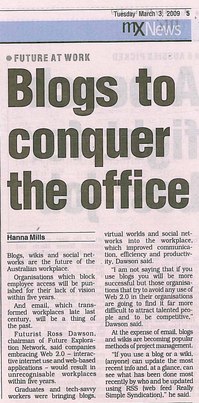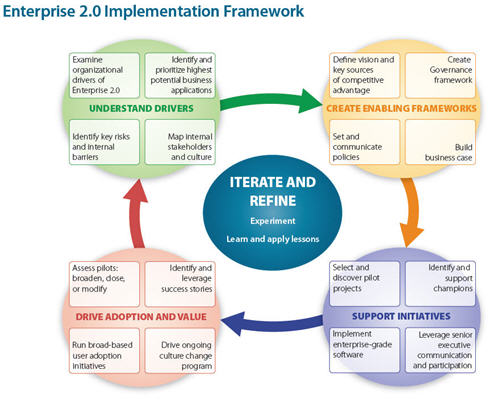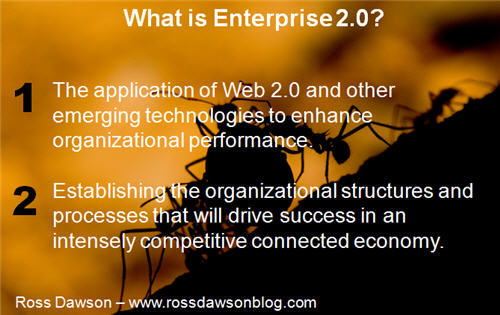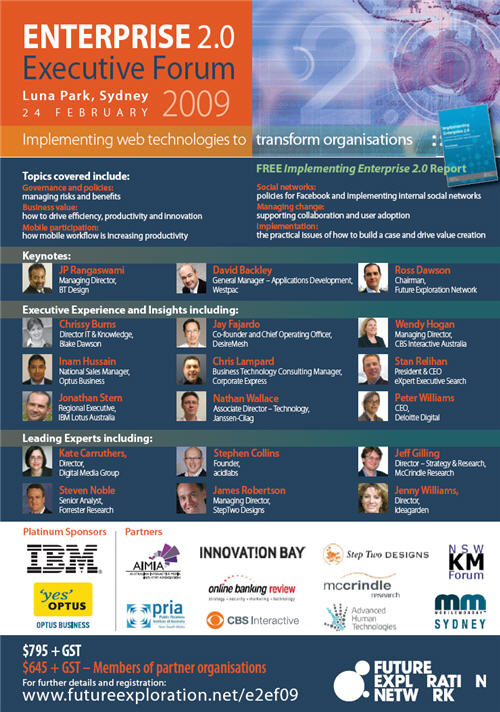 Last week mX newspaper in Melbourne (the city’s largest free newspaper with readership of over 300,000) had a little story on Blogs to conquer the office based on an interview with me. The article was originally intended to cover the upcoming Enterprise 2.0 Executive Briefing which was run last Thursday in Melbourne, though the final article just covered some of the forthcoming shifts in the workplace (slightly mangled in the journalistic process).
Last week mX newspaper in Melbourne (the city’s largest free newspaper with readership of over 300,000) had a little story on Blogs to conquer the office based on an interview with me. The article was originally intended to cover the upcoming Enterprise 2.0 Executive Briefing which was run last Thursday in Melbourne, though the final article just covered some of the forthcoming shifts in the workplace (slightly mangled in the journalistic process).
Hopefully these kinds of messages will eventually filter through this kind of mass audience to help accelerate these trends. Full text of the article below, or click on the image for a scan of the article.
Blogs to conquer the office
Blogs, wikis and social networks are the future of the Australian workplace.
Organisations which block employee access will be punished for their lack of vision within five years.
And email, which transformed workplaces late last century, will be a thing of the past.
Futurist Ross Dawson, chairman of Future Exploration Network, said companies embracing Web 2.0 – interactive internet use and web-based applications – would result in unrecognisable workplaces within five years.
Graduates and tech-savvy workers were bringing blogs, virtual worlds and social networks into the workplace, which improved communication, efficiency and productivity, Dawson said.
“I am not saying that if you use blogs you will be more successful, but those organisations that try to avoid any use of Web 2.0 in their organisations are going to find it far more difficult to attract talented people and to be competitive,” Dawson said.
At the expense of email, blogs and wikis are becoming popular methods of project management.
“If you use a blog or a wiki, (anyone) can update the most recent info and, at a glance, can see what has been done most recently by who and be updated using RSS (web feed Really Simple Syndication),” he said.




